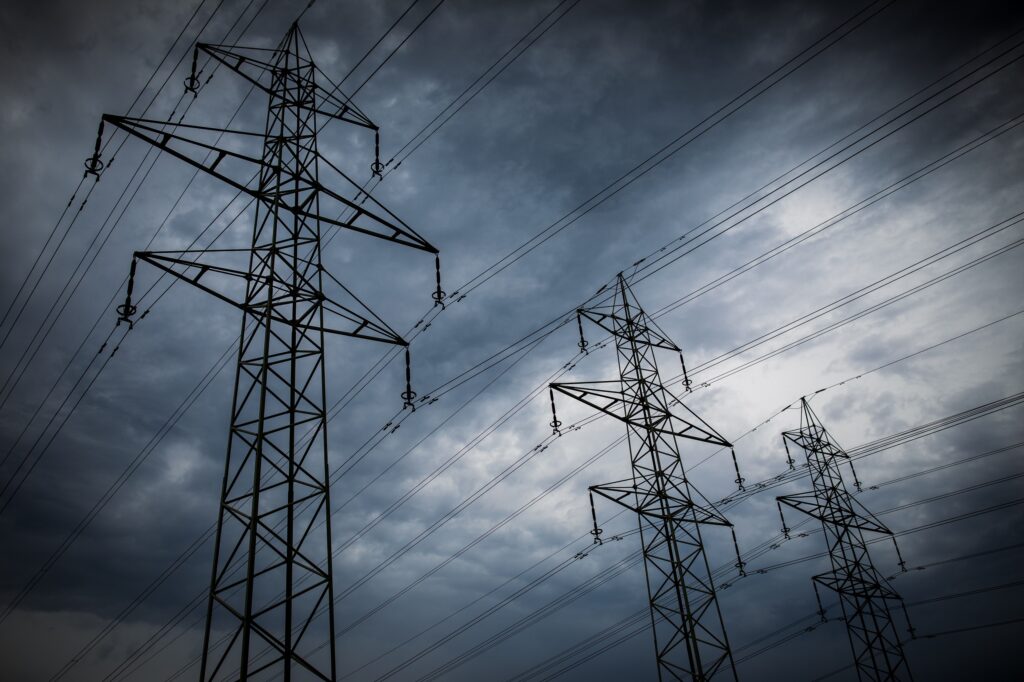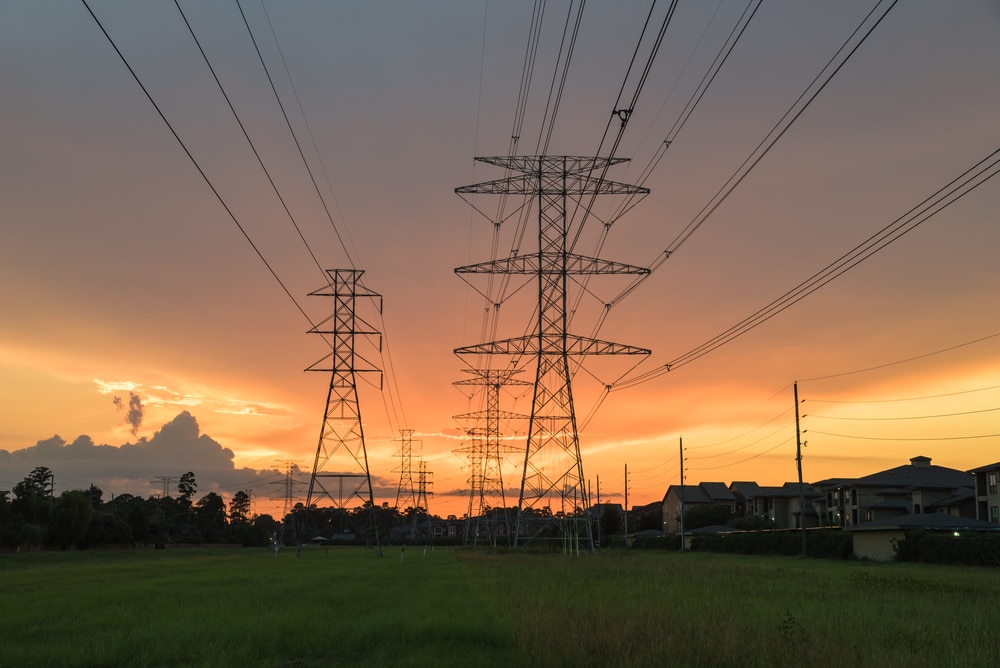The Appropriate Role of Electric Utilities in Transportation Electrification
Market and public policy forces are driving the electrification of transportation. Over the rest of this decade, the availability of electric vehicles (EVs) is expected to increase as more EVs are available to buyers, and policies favoring EV production and purchase are developed. Both the Bipartisan Infrastructure Law (BIL) and Inflation Reduction Act contain numerous policies and subsidies to support increased electrification. For example, the BIL requires states to develop their own EV investment and EV-charging infrastructure corridor plans in order to access federal funds under the National Electric Vehicle Infrastructure (NEVI) Formula Program. Despite all the funding to install charging infrastructure, there is an actor in this transition that will play a significant role in determining the success or failure of any EV policy: the electric utility.
The efficient rollout of EV-charging infrastructure depends upon determining the appropriate role for the electric utility in transportation electrification. In every state, even those with competitive generation and retail services, the distribution utility remains a regulated monopoly. The role of the distribution utility is to provide least-cost reliable service by making prudent investments in distribution infrastructure and allocating those costs to ratepayers based on the costs caused by those ratepayers.
The growth of EVs provides utilities with a number of opportunities. Increased load growth allows for the development of rate designs that can put downward pressure on rates as utilities are able to recover their costs over a greater amount of energy sold. However, it also means that utilities may be looking to expand their capital output as utilities earn a profit based on the amount of infrastructure (i.e., capital) that is spent. So, utilities have a strong incentive to invest in charging infrastructure as that investment becomes new capital.
Investments aimed at enabling EV charging are generally split between utility-side and customer-side. For utility-side, this includes all investments from the distribution grid to the stub where the charging equipment will be installed. These investments “make ready” the grid for EV-charging equipment to be installed at a location by the customer or charging infrastructure provider. Everything after that—including the charging equipment and all other investments needed on the customer-side—becomes the responsibility of the customer. While the utility may offer rebates for equipment on the customer-side, the choice of what equipment to install is up to the customer. The utility-side make-ready investments, on the other hand, are considered utility infrastructure investments, meaning that they are no different than other infrastructure a utility needs to install to handle new or increased demand. However, for an increasing number of utilities, it is not enough to focus only utility-side make ready infrastructure; utilities are seeking to ratebase customer-side investments that have been, to date, largely left to the marketplace.
To support their requests to ratebase customer-sited equipment, utilities state that the market has not done enough to build out the charging infrastructure necessary to address concerns about lack of charging infrastructure, and, since the utilities are regulated, they can be trusted to build out the necessary infrastructure that is otherwise not provided by the marketplace. Some environmental advocates have also joined with the utilities arguing that in order to meet carbon emission reductions from the transportation sector, it makes the most sense to let utilities ratebase the equipment. While it is reasonable to try to ensure that charging infrastructure is made available, there are a number of issues with allowing the utility to ratebase charging infrastructure. Further, there are several additional policies that need to be addressed, including the ownership of charging infrastructure.
However, experience from around the country shows that utility ownership of charging infrastructure may not ensure that the charging infrastructure is reliable. A review of utility-owned charging infrastructure in Maryland showed that 35 percent of the direct-current fast chargers (DCFC) owned by Baltimore Gas and Electric were not functioning. Instead of relying directly upon utility-owned charging, utilities could be in the position to offer rebates to locations who seek to install DCFCs. This would provide greater flexibility in the deployment of DCFCs. The utility—and the regulator—can require that recipients of any rebate adhere to certain performance requirements, similar to what is required for NEVI funding, which requires a 97 percent annual uptime.
Recognizing the utility’s interest to ratebase capital investments, the utility may also be exercising market power over competitors. A 2021 essay noted:
In the context of utility regulation, unearned advantage is government-assisted advantage: the advantages accrued from decades of government protection from competition, plus decades of government price-setting calculated to produce reasonable returns. When the utility (or its affiliate or successor) enters a competition, these advantages act as entry barriers—differences in market entry cost between the incumbent and a new entrant.
In essence, the electric utility is not fairly competing, which would be based merit—whether its product is better or worse than another—but is using its government granted monopoly to assert market power over its competitors to drive out competition. These unearned advantages, including logo and name recognition, allow the utility to beat out competitors with more merit which “makes consumers worse off—an outcome precisely opposite to competition’s purpose.” Only by removing the utility’s unearned advantage can there be “real competition, effective competition, competition on the merits—competition whose purpose is to help the consumer, not entrench the incumbent.”
In practice, this unearned advantage provides utilities with significant market power over the competitive charging infrastructure market. For example, by treating customer-side infrastructure as rate base, the utility can offer charging equipment at no cost to EV customers by shifting the cost to their captive rate base to subsidize investments. In this manner, the monopoly is able to underprice the product because of its ability to recover charging costs through higher rates on non-EV customers, which undercuts competition in the electric vehicle supply equipment (EVSE) market.
Allowing a utility to leverage its unearned advantage is unfair, and regulators should be wary about allowing a utility to interfere with a competitive market without a showing of market failure. For example, the California Public Utilities Commission adopted a new policy finding that it is “appropriate to eliminate all [investor-owned utility] ownership of [behind the meter] infrastructure … Such a shift in the ownership paradigm allows for technology and construction flexibility, while reducing the cost burden that capitalized IOU expenditures impose on ratepayers.”
So, what is a state or policymaker to do, to respond to the growth of EV adoption? The following identifies a number of topics that a state can address to support EV adoption; prevent the utility from exercising monopoly power; and ensure utilities prepare the distribution system for EVs while minimizing government barriers to their adoption.
Keep EVSE providers unregulated by states
Legacy state law treats an entity that re-sells electricity as a state-regulated utility. However, 44 states, plus Puerto Rico and D.C., decided that entities re-selling electricity to charge EVs are not considered to be a utility. This allows customers or EV-charging providers to charge customers for using the charging equipment without being regulated. When not charging at home, which is billed at the applicable retail tariff rate, a variety of payment options are available, including a subscription model (a customer pays $X a month to access a charging network), a flat fee (a customer pays a one-time fee to connect regardless of how much electricity is consumed), a per-minute fee (a customer pays $X per minute to charge the EV) or to offer charging at no cost. Permitting competitive suppliers to re-sell electricity to charge EVs is an important policy that allows locations to install charging infrastructure for customers. For example, gas stations and retailers, like Walmart, will invest in charging infrastructure if the state lets them pursue an associated revenue stream. If they were required to be regulated, like an electric utility, the drive to install charging infrastructure would vanish and states would be left with fewer options for customers looking to charge their vehicles.
Prevent monopoly expansion into competitive markets
Allowing utilities to enter into competitive markets would have a chilling effect on the development of charging infrastructure, innovation and costs. Furthermore, according to a recent report by Grid Strategies, “utility ownership of EV charging stations is generally not in the public interest.” If utilities were allowed to extend their monopoly into competitive markets, customers would lose out on the choices and options that competition provides. Regulators should “quarantine the monopoly” to allow a marketplace to develop where competitors compete on price, services and quality. Additionally, this would allow infrastructure to be installed when and where needed, not sit idle for years waiting for EV adoption rates to increase to the benefit of utility shareholders—who benefit from the capital investment. Instead, states should continue to focus on utility-side make-ready investments. This remains the appropriate route for utility participation in enabling the transition to EVs.
However, there should remain a path for utility ownership of charging infrastructure in certain circumstances. For example, certain areas of a utility service territory may not see adequate investment, and in such cases, the regulator may then develop a process where utility could act as a provider of last resort. If the market fails to provide infrastructure, then the utility may be allowed to install charging infrastructure, only after the regulator determines that the market has indeed failed to provide solutions. The provider of last resort option is currently being introduced in Georgia and New Jersey.
Create efficient rate designs
In order to ensure that charging does not exacerbate system or distribution peaks, jurisdictions should consider adopting EV-specific rate designs that send a price signal to encourage charging during off-peak time periods. Currently, the majority of charging takes place at the drivers’ residence. To avoid charging that occurs during peak times, regulators should look to adopt EV time-of-use rates that send a price signal to charge during non-peak hours. As EV adoption increases and charging infrastructure grows beyond residential charging, it may then be necessary to evolve rate design so that it better aligns with grid conditions and enables more flexible charging options.
However, it is key to mitigate potential bill shocks for customers when utilizing a DCFC location, especially with low adoption of EVs. In particular, since DCFCs will be located at commercial or industrial locations, those locations are charged a demand charge, which is measured in kilowatts (kW) and represents the maximum amount of electricity delivered at a particular time of the month and is then fixed over the year. For locations that have a DCFC that is used only a few times a month, this can result in a significantly higher electricity bill and can cause the location to remove the DCFC. In short, if the demand charge is non-coincident, and the charging session occurs during off-peak hours, the demand charge is not sending an appropriate price signal.
Since DCFCs are an important piece of the overall charging ecosystem, jurisdictions and some utilities have proposed a demand charge holiday, where a demand charge is not charged, or is substantially lower, so that the business case for DCFCs remain for the location. For example, Southern California Edison (SCE) received approval for a $0 demand charge for five years; after five years, SCE would begin to re-introduce demand charges, but on an incremental basis. This provides time for DCFCs to operate without economically harming the host and gives time for adoption of EVs to continue.
Expand awareness of the location of DCFCs
As EV adoption grows, including the electrification of fleets, school buses, mass transit and semi-trucks, it will be increasingly important to locate these larger DCFC installations in areas of a utility’s service territory that is capable of integrating and providing sufficient amounts of electricity. For example, a travel plaza with 12 diesel pumps may start to replace each diesel pump with a 1 megawatt DCFC port, plus smaller level 2 chargers that serve passenger vehicles. That is a substantial increase in demand that, depending on location, may stress the reliability of the distribution infrastructure or require costly upgrades. Directing utilities to make publicly available their hosting capacity maps will greatly enhance the ability of developers and locations to identify optimal locations to place DCFCs. For example, with access to the hosting capacity maps, developers can see where there is available capacity to handle multiple 350kW DCFCs without requiring expensive substation upgrades.
Conclusion
There is still much to do to ensure that the electric system is prepared to handle the growth of EV charging. While current regulatory efforts have focused on whether the utility can own charging infrastructure located on the customer side, many other policy needs must be met to support the EV ecosystem. Regulators should focus on ensuring that the utility does not unfairly interfere with an emerging marketplace for EV-charging infrastructure by ensuring that the underlying policies and practices—such as not regulating the re-sale of electricity for EV charging, adopting EV-specific rates and creating demand charge holiday rates for DCFCs—are in place first.









